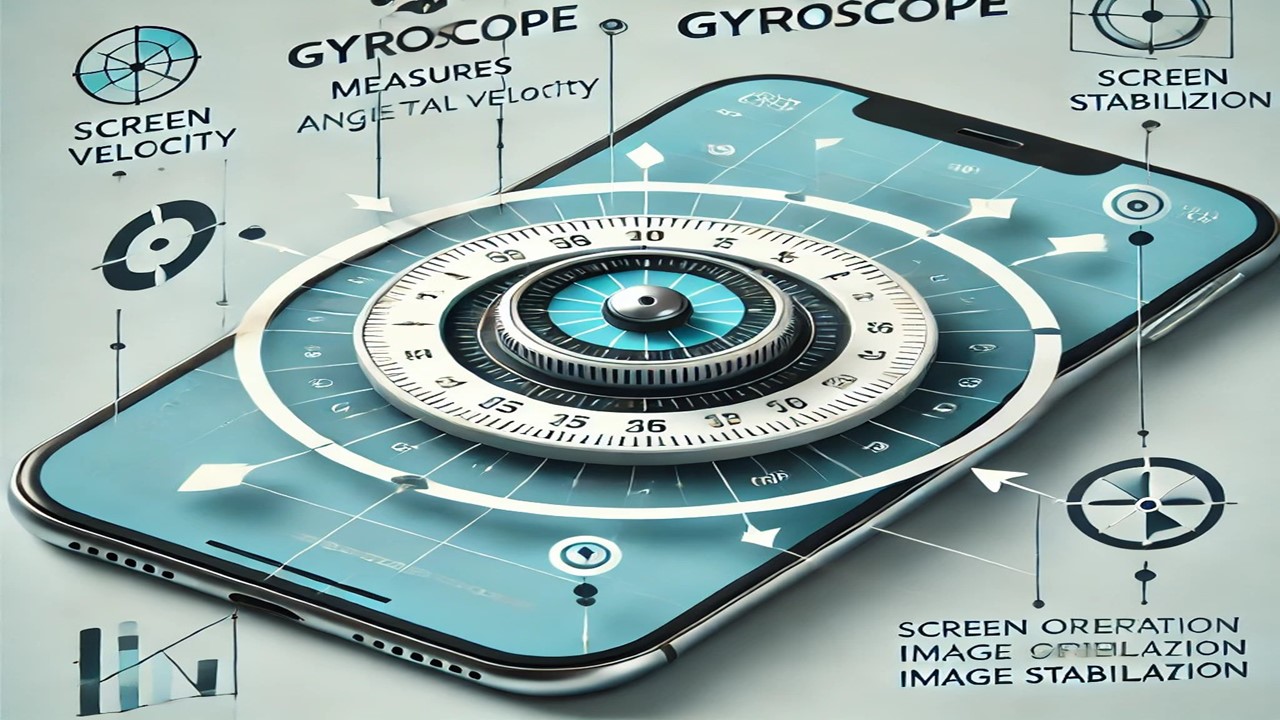
Imagine holding your smartphone and rotating it in one direction, and the screen instantly adjusts to match that orientation. This isn’t magic; it’s the work of a hidden technology—the gyroscope sensor. This small component tracks the device’s motion and orientation, playing a vital role in many electronic gadgets.
Importance of Gyroscope Sensors
Gyroscope sensors measure angular motion. They are found in smartphones, drones, gaming consoles, and even autonomous vehicles. When you rotate your device, the sensor tracks your movement and processes that data, allowing the device to adjust its screen accordingly.
How Gyroscopes Work
A gyroscope sensor typically contains an oscillator that measures the device’s movement. When the device rotates, the sensor records the change in orientation. The processor then interprets this data and adjusts the device’s screen to match. Initially, there were 3-axis sensors, but now there are 6-axis and even 9-axis sensors, which can measure movement with greater accuracy.
Applications of Gyroscope Sensors
Gyroscope sensors are used in various devices:
- Smartphones: For auto-rotation, gaming, and image stabilization in cameras.
- Drones: For stable flight and precise navigation.
- Autonomous Vehicles: To help vehicles accurately determine their direction and navigate safely.
- Virtual Reality (VR) and Augmented Reality (AR): To track user movements.
Technological Upgrades in Gyroscope Sensors
Several upgrades are currently being implemented in gyroscope sensors:
- 6-axis and 9-axis Sensors: These offer greater accuracy and better data collection.
- MEMS (Micro-Electro-Mechanical Systems): These sensors are smaller and more sensitive, widely used in drones, smartphones, and other devices.
- Fusion Sensors: These combine multiple types of sensors to achieve higher accuracy.
- Auto-Calibration: New sensors can automatically calibrate themselves, improving performance.
The Future Role of Gyroscopes
The future of gyroscope sensors looks promising. In the coming years, these sensors will play an essential role in smartwatches, home robots, and autonomous vehicles. Companies are developing sensors that can detect movement at the microsecond level.
Contributions from Companies
- Bosch: This company is making advancements in gyroscope technology.
- STMicroelectronics: They are leaders in producing MEMS-based sensors.
- Apple: Focusing on enhancing gyroscope sensors for AR/VR applications.
- Samsung: Working on improving gyroscope technology in smartphones and other devices.
- Qualcomm: Integrating cutting-edge gyroscope sensors into their processors for AI applications.
Market Competition
The gyroscope sensor market is becoming increasingly competitive. Companies are not only focusing on improving accuracy and sensitivity but also on reducing the size and power consumption of sensors. In the future, we will likely see ultra-low power sensors that can operate for extended periods without a battery.
Gyroscope sensors have established themselves as an unseen hero in our modern devices. They are playing a significant role not only in smartphones and gaming but also in autonomous vehicles and other high-tech equipment. As technology advances, gyroscope sensors continue to revolutionize smart devices, making our digital lives more intelligent and responsive.
This invisible technology makes us think about how exciting the future will be. While we only use this technology, delving into its workings and development is incredibly interesting. The gyroscope sensor, which has become a common element in our lives, is likely to prove even more significant in the future.


































































